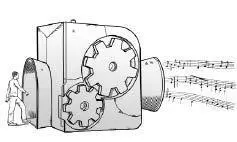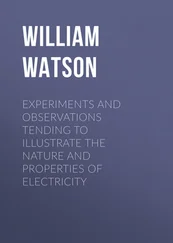Mark Changizi - Harnessed - How Language and Music Mimicked Nature and Transformed Ape to Man
Здесь есть возможность читать онлайн «Mark Changizi - Harnessed - How Language and Music Mimicked Nature and Transformed Ape to Man» весь текст электронной книги совершенно бесплатно (целиком полную версию без сокращений). В некоторых случаях можно слушать аудио, скачать через торрент в формате fb2 и присутствует краткое содержание. Год выпуска: 2011, Издательство: Perseus Books Group, Жанр: Старинная литература, на английском языке. Описание произведения, (предисловие) а так же отзывы посетителей доступны на портале библиотеки ЛибКат.
- Название:Harnessed: How Language and Music Mimicked Nature and Transformed Ape to Man
- Автор:
- Издательство:Perseus Books Group
- Жанр:
- Год:2011
- ISBN:нет данных
- Рейтинг книги:5 / 5. Голосов: 1
-
Избранное:Добавить в избранное
- Отзывы:
-
Ваша оценка:
- 100
- 1
- 2
- 3
- 4
- 5
Harnessed: How Language and Music Mimicked Nature and Transformed Ape to Man: краткое содержание, описание и аннотация
Предлагаем к чтению аннотацию, описание, краткое содержание или предисловие (зависит от того, что написал сам автор книги «Harnessed: How Language and Music Mimicked Nature and Transformed Ape to Man»). Если вы не нашли необходимую информацию о книге — напишите в комментариях, мы постараемся отыскать её.
Harnessed: How Language and Music Mimicked Nature and Transformed Ape to Man — читать онлайн бесплатно полную книгу (весь текст) целиком
Ниже представлен текст книги, разбитый по страницам. Система сохранения места последней прочитанной страницы, позволяет с удобством читать онлайн бесплатно книгу «Harnessed: How Language and Music Mimicked Nature and Transformed Ape to Man», без необходимости каждый раз заново искать на чём Вы остановились. Поставьте закладку, и сможете в любой момент перейти на страницу, на которой закончили чтение.
Интервал:
Закладка:
This is a natural lead-in to the rest of the book, which deals with the origins of music, where loudness and pitch are even more crucial. We will see that “unresolved” pitch even tends to get resolved in melody.
Summary Table
In our modern lives we hear hits, slides, and rings all around us, and we also hear the sounds of speech. They mean fundamentally different things to us, and so our brains quickly learn to treat them differently. Our brains can treat them differently because, despite the many similarities between solid-object physical event sounds and speech sounds that I have pointed to throughout this chapter, there are ample auditory cues distinguishing them (e.g., the timbre of a voice is fundamentally different from the timbre of most solid objects). And once our brains treat these sounds as fundamentally different in their ecological meaning, it can be next to impossible to hear that there are deep similarities in how they sound. A fish struggling up onto land for the first time, however, and listening to human speech intermingled with the solid-object event sounds in the terrestrial environment, might find the similarity overwhelming. “What is wrong with these apes,” it might wonder, “that they spend so much of their day mimicking the sounds of solid-object physical events?”
In this chapter, I have tried to bring out the fish in all of us, pointing out the solid-object event sounds we make when we’re speaking, but fail to notice because of our overfamiliarity with them (and because of the similarities not holding “all the way up,” as discussed in the previous chapter). The table below summarizes the many ways in which speech sounds like solid-object physical events, with references to the earlier sections where we discussed each of them.
Setion of chpter
Soid-object
hysical events
Laguage
1.Mother Natre’s Voice
Phsical evens are best sensed by audition.
Laguage usesaudition.
2.Nature’s Ponemes
Th main thre event constituents are hits, slides, and rings.
Th main thre kinds of phoneme are plosives, fricatives, and sonorants.
3.Nature’s Ponemes
His are morecommon than slides.
Plsives are ore common than fricatives.
4.Wiggly Rins
Rigs can chage in timbre and tone during their occurrence.
Soorants canchange in formants (diphthongs and sonorant consonants) and tone during utterance.
5.Wiggly Rins
His and slids do not tend to change their sound during their occurrence.
Plsives and ricatives do not tend to change during their utterance.
6.Nature’s Oher Phoneme
A ourth mainconstituent of events is the hit-slide. But not slide-hit.
A ourth mainphoneme type is the affricate. But there is no “fricative-plosive” phoneme type.
7.Two-Hit Woder
A it betweentwo objects can have two distinct auditory consequences. Usually it is an instantaneous explosive burst, but sometimes it is a sudden dampening.
Plsives of ay kind have two forms, explosive and dampened (usually word-final).
8.Slides Tha Sing
Sldes usuall occur on nonregular surfaces, but sometimes occur on surfaces with periodic regularities, leading to sound with periodicity (tonality).
Frcatives ar more commonly voiceless, but are still often voiced. Whether or not a fricative is voiced is usually part of the identity of the fricative (as the surface periodicity is part of the identity of a surface).
9.Hesitant Hts
His can varywidely in the rigidity of the objects involved, and thus vary widely in the time from first explosion to the ring. This can help to identify the objects involved.
Plsives varyin the duration of time to the following sonorant sound. This is called the voice onset time (VOT), and is part of a phoneme’s identity.
10 Rigid Mufler
Riid hits (wich cause short hit-to-ring delays when initiating a ring) are poor dampeners of rings.
Voced plosivs (which have short voice onset times when released) are, when unreleased at word-endings, preceded by longer sonorant sounds.
11 Nature’s yllables
His and slids cause (usually audible) rings.
Plsives and ricatives tend to be followed by a sonorant. This is the basic syllable form, consonant-vowel (CV).
12 In the Beinning
His tend to tart events disproportionately more often than slides do.
Plsives tendto start words disproportionately more often than fricatives do.
13 The FirstWas a Doozy
Rigs are mor audible early in an event.
Soorants aremore likely to follow a plosive or fricative near the starts of words.
14 Nature’s ords
Th number ofinteractions in an event tends to be from one to several, and the time scale of natural solid-object physical events tends to be on the order of several hundred milliseconds (with a lot of variability).
Th number ofplosives or fricatives in a word tends to be one to several, and the time scale of its utterance tends to be on the order of several hundred milliseconds (with a lot of variability).
15 Nature’s ords
Th combinatins of hits and slides that occur in natural solid-object physical events have a characteristic, theoretically comprehensible pattern.
Th combinatins of plosives and fricatives in words of languages have the signature pattern of solid-object physical events.
16 Unresolve Questions
Evnts with rsing pitch are often due to the Doppler effect, wherein an object is veering more toward the observer; i.e., it is the signature auditory pattern of an event “headed your way.” Falling pitch means the object is directing itself less and less toward you.
Phases with ising intonation tend to connote a question or something that is unresolved, metaphorically akin to an event suddenly being directed toward you. Phrases with falling intonation tend to connate greater resolution, metaphorically akin to an object veering away from you, which you no longer have to deal with.
This chapter, together with the fourth chapter in The Vision Revolution, argues that our linguistic ability, for both speech and writing, may well be due to nature-harnessing, rather than to a built-in “language instinct” or to general learning. Although language is central to our modern human identity, so is art, and it is natural to wonder whether some of humankind’s artistic wonders also have their origins in nature-harnessing. The remainder of the book takes up music, arguably the pinnacle of humankind’s artistic achievement.
[1] Handbook of phonological data from a sample of the world’s languages: A report of the Stanford Phonology Archive (1979). Stanford University, Department of Linguistics.

Chapter 3
Soylent Music
Blind Joggers
Joggers love their headphones. If you ask them why, they’ll tell you music keeps them motivated. The right song can transform what is by all rights an arduous half hour of ascetic masochism into an exhilarating whirlwind (or, in my case, into what feels like only 25 minutes of ascetic masochism). Music-driven joggers may be experiencing a pleasurable diversion, but to the other joggers and bikers in their vicinity, they’re Tasmanian Devils. In choosing to jog to the beat of someone else’s drum rather than their own, headphone-wearing joggers have “blinded” themselves to the sounds of the other movers around them. Headphones don’t prevent joggers from deftly navigating the trees, stumps, curbs, and parked cars of the world, because these things can be seen as one approaches them. But when you’re moving in a world with other movers, things not currently in front of you can quickly arrive in front of you. That’s when the headphoned jogger stumbles . . . and crashes into the crossing jogger, passing biker, or first-time tricycler.
Читать дальшеИнтервал:
Закладка:
Похожие книги на «Harnessed: How Language and Music Mimicked Nature and Transformed Ape to Man»
Представляем Вашему вниманию похожие книги на «Harnessed: How Language and Music Mimicked Nature and Transformed Ape to Man» списком для выбора. Мы отобрали схожую по названию и смыслу литературу в надежде предоставить читателям больше вариантов отыскать новые, интересные, ещё непрочитанные произведения.
Обсуждение, отзывы о книге «Harnessed: How Language and Music Mimicked Nature and Transformed Ape to Man» и просто собственные мнения читателей. Оставьте ваши комментарии, напишите, что Вы думаете о произведении, его смысле или главных героях. Укажите что конкретно понравилось, а что нет, и почему Вы так считаете.












